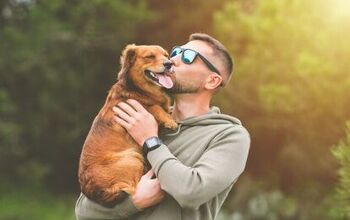Shetland Sheepdog


About Shetland Sheepdog
It may look like a little Lassie, but the Shetland Sheepdog, also known as the Sheltie, is a superstar in its own right. Thought to be quick learners, willing to please, and obedient, the Shetland Sheepdog can also be somewhat timid and sensitive. But that doesn’t mean this breed doesn’t make a great family pet. Quite the opposite – the Sheltie is a devoted dog that will fit right into an active family. Suitable to be an indoor or outdoor dog, the Shetland Sheepdog is versatile and loves to play with its family.
So is the Shetland Sheepdog right for your family? Read on and find out.
Thought to be quick learners, willing to please, and obedient, the Shetland Sheepdog can also be somewhat timid and sensitive.
Hailing from the rugged Shetland Islands (approximately 50 miles north of Scotland), Shetland Sheepdogs were found throughout Great Britain in the early 1800s. Described as miniature Collies, Shelties were used to herd smaller livestock. Although the Border collie has replaced the Shetland Sheepdog in the Shetland Islands when it comes to herding responsibilities, Shetland Sheepdogs are still popular all over the world as show dogs, pets, and herding dogs on farms.
Pedigree
The Sheltie can trace its origins back to the Border Collie of Scotland, as well as to other small, intelligent, long-haired breeds, to bring us with the miniature pooch we know and love today. The Shetland Sheepdog worked as farm helpers and protectors, watching over cottages, flocks and herds from predators.
The Shetland Sheepdog was recognized by the American Kennel Club in 1911.
Fresh foods, such as meats and vegetables, work well with Shetland Sheepdogs. If you do choose to go with a premium dog food, make sure it has proper amounts of protein, fat and other nutrients. Steer clear of those with high grain content – Shelties have allergies to grain and have sensitive stomachs that will tolerate only certain types of food.
Highly intelligent, obedient, able to problem solve, and easy to train, the Shetland Sheepdog loves spending time in agility or obedience classes.
Highly intelligent, obedient, able to problem solve, and easy to train, the Shetland Sheepdog loves spending time in agility or obedience classes. The Sheltie enjoys playing fetch and will happily jog or run with you. Of course, employing the right training methods is imperative, and will usually result in an easy, successful lesson. Young or old, Shelties are so trainable and intelligent that this breed can be taught at any age. If you’re looking to socialize your Shetland Sheepdog, a professional training class is the way to go.
Both male and female Shetland Sheepdogs fall in the 16 to 24 pounds range.
Temperament / Behavior
Shetland Sheepdogs are sensitive, gentle, and loyal with a broad array of personality traits, from boisterous and outgoing to sedate, calm, or shy. Wonderful additions to any family, Shetland Sheepdogs are always willing to obey and please. Widely considered to be one of the smartest of all dog breeds, Shelties are highly trainable and seem to have almost human intelligence (it ranks 6 in intelligence out of 138 dog breeds). These affectionate dogs get along with children as well as other dogs and pets in the family. They still have a herding instinct, and will sometimes nip at people’s ankles and feet.
Shetland Sheepdogs are wary of strangers, and will bark to let you know if someone is on the property or at the door. And even though the breed makes excellent watchdogs, Shelties make poor guard dogs because they are just too friendly. Start socialization and obedience training early so it knows how to behave in social situations. You may find that your Shetland Sheepdog may be a little too vocal, but proper training controls this problem.
Shetland Sheepdogs are well suited for country or suburban life in small or large living quarters, just as long as it gets enough exercise such as regular walks, playing, and training.
A few of the health concerns connected with Shetland Sheepdogs include progressive retinal atrophy, hip dysplasia, hypothyroidism, Von Willebrand Disease, Collie eye anomaly, and Sheltie skin syndrome.
Shetland Sheepdogs have a life expectancy of 12 to 15 years.
Shetland Sheepdogs need both physical and mental challenges in order to stay happy and out of trouble. This breed requires a fenced, safe, large outdoor yard or area to run, play, and release some of its energy. Thanks to its herding dog instincts, Shelties love chasing animals, people, children or anything else that causes movement or stimulation. Take your Shetland Sheepdog on daily walks or runs.
Shetland Sheepdogs are sensitive, gentle, and loyal with a broad array of personality traits, from boisterous and outgoing to sedate, calm, or shy.
The American Kennel Club says this about the breed: “A rough-coated, long-haired working dog, he is alert, intensely loyal and highly trainable and is known as a devoted, docile dog with a keen sense of intelligence and understanding. Agile and sturdy, the Sheltie is one of the most successful obedience breeds, but also excels in agility, herding and conformation.”
Double-coated Shetland Sheepdogs have a long, straight topcoat and a close, shorthaired, soft undercoat. On the Shelties feet, ears, and head, the hair is smooth, while the hair on its mane, fore-chest, tail, legs, and neck is long and abundant. Splashed with tan and/or white markings, the three basic colors of the Shetland Sheepdog include black; sable (ranging from mahogany to golden); and blue merle (black and blue-grey).
To keep your dog’s coat looking beautiful, you’ll have to brush it weekly using a pin brush. To ease out tangles or mattes, you should lightly mist the Sheltie’s coat with water first. Areas where you’ll find the most tangling include the hair beneath the shoulders, hindquarters, and behind the ears. Use a small slicker brush to remove any tangles and mats found here.
During shedding season, Shetland Sheepdogs need extra brushing to remove the dead or loose hair and dirt, help prevent tangles and keep the dog’s coat cleaner.
Shetland Sheepdog puppies are hard to resist. Don’t expect your puppy to have a really beautiful coat until they reach three to five years old. Because of its small size, always warn children to play carefully with the new puppy.

Amy Tokic, Editor of PetGuide.com, is a passionate animal lover and proud pet parent of Oscar, a Shih Tzu/Chihuahua cross, and Zed, a Japanese Chin. Her love of animals began in kindergarten, when she brought her stuffed dog Snoopy into class with her every day. Now, she writes about her adventures in pet ownership and tirelessly researches products, news and health related issues she can share with other animal enthusiasts. In her free time, Amy loves perusing used book and record stores, obsessing over the latest pet products available and chasing squirrels with wild abandon (a habit attributed to spending too much time with her pooches).
More by Amy Tokic

























